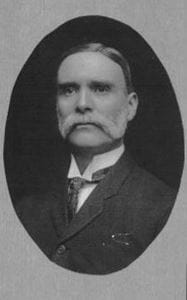By: Richard L. Schreiner, MD, Edwin L. Gresham Professor Emeritus of Pediatrics, Indiana University School of Medicine; Retired Chairman, Department of Pediatrics; Retired Physician-in-Chief, Riley Hospital for Children at IU Health
The future of Indiana University School of Medicine rested squarely on the shoulders of the Indiana University Board of Trustees naming the right leader to be first dean of the newly established medical school. The right leader was needed to put an end to contentious years of debate on how to consolidate the Hoosier State’s many medical colleges and at what university the State’s medical school should be housed.
With Indiana University being so designated by eventual agreement in 1908 and by legislation in 1909, there was no time to waste. Building a unified IU School of Medicine faculty, creating a curriculum, and recruiting medical students needed to begin and quickly. While his name today is mentioned only briefly as dean of IU School of Medicine in its first four years, 1908-1911, that “right” leader was Allison Maxwell, MD. Here are a few things to know about the IU School of Medicine’s first dean:
• Dr. Maxwell’s family has strong historic ties to Indiana University. His father, James Darwin Maxwell, M.D., was for many years a trustee of Indiana University; his grandfather was David H. Maxwell, M.D., who many credit as being the founder of Indiana University and who also served as president of the University’s first board of trustees. Maxwell Hall on Indiana University’s Bloomington campus is named in their honor.
• Dr. Maxwell was dean of the State College of Physicians and Surgeons of Indianapolis until the merger in 1907 of this medical school with the Indiana Medical College and the Fort Wayne Medical College under the name of Indiana University School of Medicine. Dr. Maxwell was appointed dean of IU School of Medicine by the Indiana University Board of Trustees on June 23, 1908.
• He led IU School of Medicine through a difficult time when financial budgets were an issue and while consolidation of the faculties of Indiana University’s and Purdue University’s Schools of Medicine was being completed. He had no budget to work with until the State Legislature appropriated one in 1909.
• Only a year and a half into Dr. Maxwell’s tenure, Abraham Flexner, renowned American educator whose work helped reform many medical schools, paid a visit to IU School of Medicine in December 1909. In the 1910 Flexner Report, Flexner observed, “The situation in the state (was) thanks to the intelligent attitude of the university, distinctly hopeful, though it will take time to work it fully.” At the time, IU School of Medicine was among the few medical schools in the nation to receive a positive evaluation from Flexner.
• Dr. Maxwell and John Finch Barnhill, MD, IU School of Medicine Treasurer, played prominent roles in selecting the site in 1911 for the Robert W. Long Hospital, the first teaching and research hospital to be built on the Medical Center campus. Medical campus historian, Thurman B. Rice, MD, observed that coincidentally, nearby streets were named Maxwell and Barnhill and unknowingly, both physicians had ancestors buried in the “Plague cemetery” in that same area. The site was selected and land purchased with funds allocated by the State Legislature.
• Dr. Maxwell was an Indiana University basketball Dad. His oldest son, Leslie (“Doc”) was Indiana University’s first big-time scorer in basketball. In game four of his freshman season, he demolished Indiana University’s single-game scoring record by tallying 27 points against DePauw, a record unbroken for 35 years (1903-1938). Leslie captained the 1903-04 Indiana University squad in his sophomore year. Dr. Maxwell passed away in 1915; his younger son, Allen, was chosen to captain the Crimson basketball team in 1916.
We owe much to the leadership of Dr. Maxwell, our first dean, who set the foundation for excellence for IU School of Medicine.
PHOTO: Dr. Allison Maxwell, First Dean of the Indiana University School of Medicine. Photo courtesy of the Indiana Medical History Museum.
